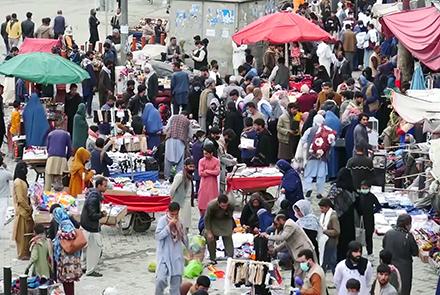The Ministry of Economy on Monday confirmed that 90 percent of Afghans are living below the poverty line, which President Ashraf Ghani stated at a conference on Saturday.
According to the ministry, families with seven to eight members that have less than Afs35,000 monthly income are living below the poverty line.
Officials of the ministry said that along with the need for food and shelter, the need for health care and education have also been considered in the criteria to determine the poverty line in the country.
A spokesman for the Ministry of Economy, Suhrab Bahman, said the cutoff of the poverty line was $1.25 in the past but after an increase in goods prices, the criteria increased to less than $2.00.
“Under the new measure, $2.00 is the index and it considers prices increase and needs and it is a global standard,” said Bahman.
The source of President Ghani's assessment is not clear, but researchers see it as realistic considering the current situation in the country.
“The extent of the poverty line figures announced by the president was 90 percent, which has been based on the $2.00 measure. The 90 percent figure under the current situation is true,” said Nazir Kabiri, head of Alberoni Research Organization.
“Ninety percent of Afghanistan’s population is living below the poverty line, which can be due to lack of attention by the international community and the Afghan government,” said Mohammad Shabir Bashiri, an analyst on economic affairs.
The Afghanistan Statistics and Information Authority (NSIA) has estimated the country’s population to be 32.9 million in 2019-20, a slight increase from 2018's estimated 31.6 million.
According to the statistics, 51 percent (16.8 million) of the population is male and 49 percent (16.1 million) of it is female.
Also, 7.7 million of the population live in cities, and an estimated 23 million live in rural areas--with the Kochi (nomad populations) numbering 1.5 million, according to the report.


